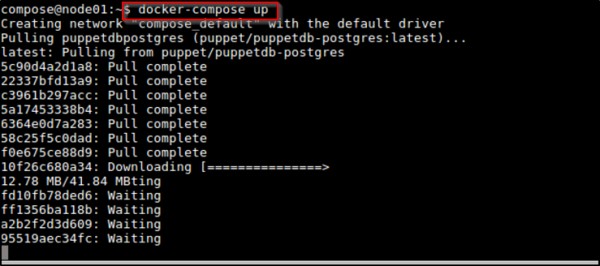You can run your Puppet infrastructure on top of a containers-as-a-service platform.
This can be accomplished with the puppet/puppetserver image, which will deploy a fully functioning Puppet master:
$ docker run --net puppet --name puppet --hostname puppet puppet/puppetserver
-
The Puppet master is created in a container called puppet on a Docker network named "puppet."
-
The only piece you really need is docker run puppet/puppetserver, but the other bits allow you to attach your master to a specific network, name the container for easy reuse, and set the hostname so container-based agent nodes can find it.
-
All the open-source components of a stand-alone Puppet infrastructure are available in this same fashion, including Puppet Server, PuppetDB and various dashboards. You can put them all back together as a stack with Docker Compose.
-
You can manually install docker-compose or install it using the docker::compose class.
-
To test the power of Docker Compose, create a docker-compose.yml file.
-
The file describes several container images, including puppetserver, puppetdb-postgres, puppetboard and puppetexplorer.
-
These last two are browser-based dashboard components that will become accessible when Docker Compose completes.
-
Everything will be pulled, built and booted from a single command executed from the directory where you’ve saved your docker-compose.yml file:
$ docker-compose up

-
This would probably take some time to pull down and install everything into a series of containers, but when it’s done you’ll have a whole environment, which gives you a way to get a very useful test environment in just a couple of minutes.
-
Instead of setting up number of VM's, you could see how this works at a minute level.
-
You can now experiment with the combination of Puppet and Docker that gives you new and powerful ways to expand your development environment.
-
Instead of deploying one Puppet node at a time, you can use simple Docker commands to do the work for you.
 REGISTER FOR FREE WEBINAR
X
REGISTER FOR FREE WEBINAR
X
 Thank you for registering
Join Edureka Meetup community for 100+ Free Webinars each month
JOIN MEETUP GROUP
Thank you for registering
Join Edureka Meetup community for 100+ Free Webinars each month
JOIN MEETUP GROUP